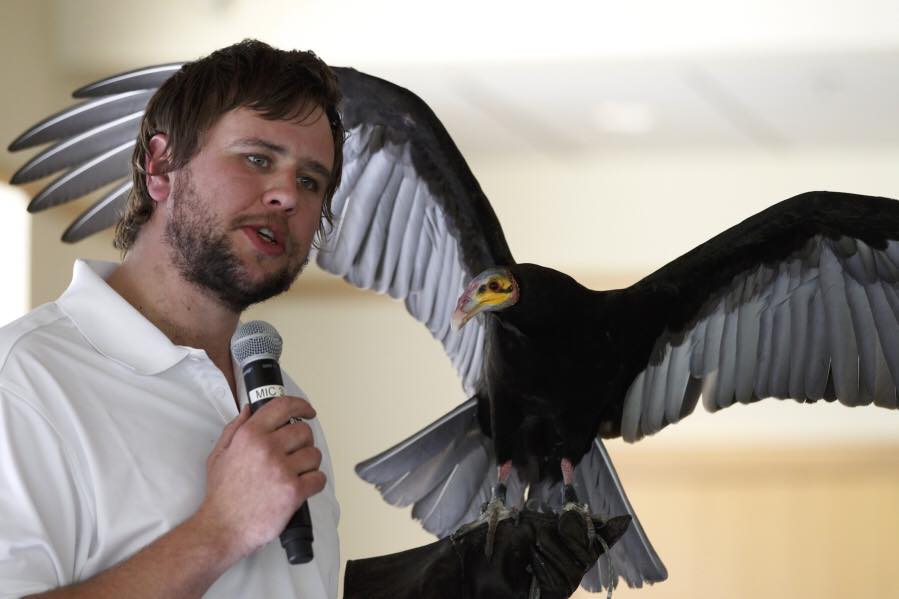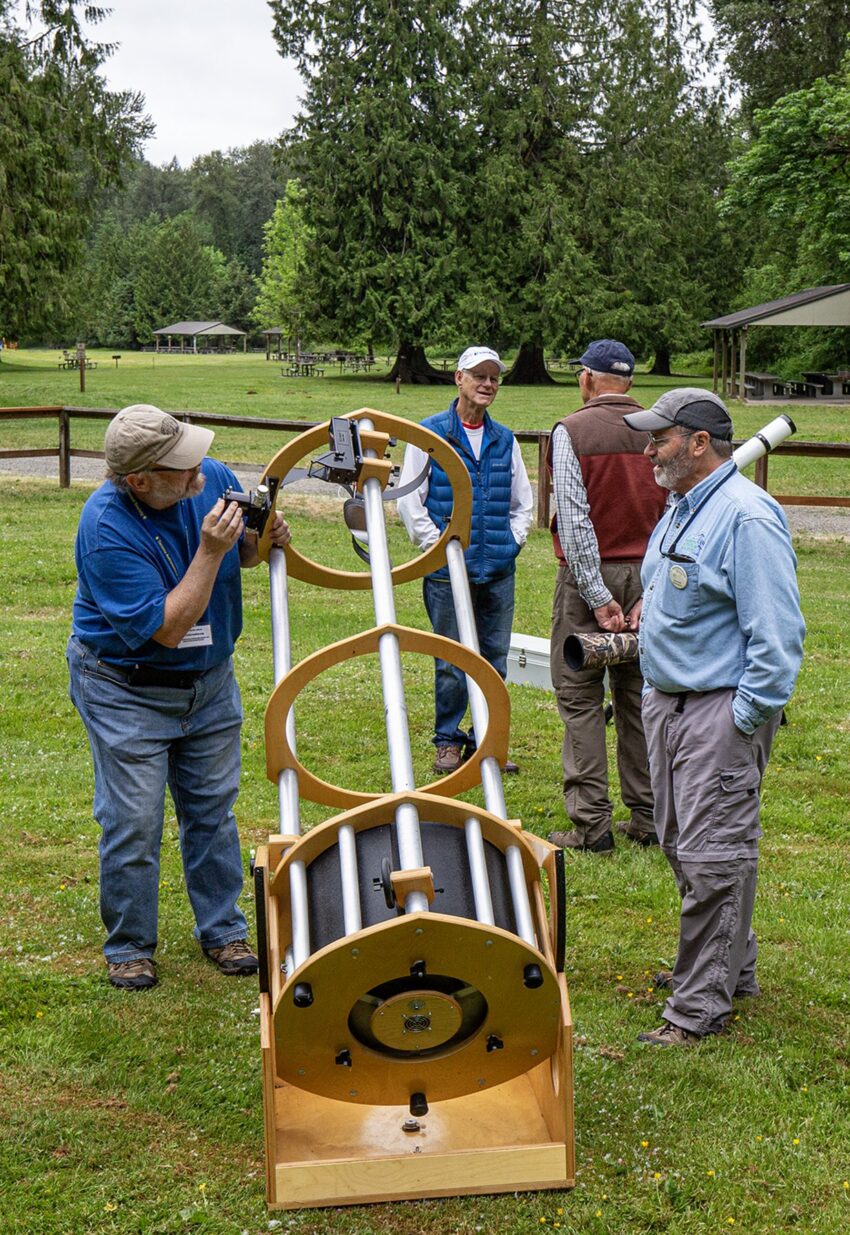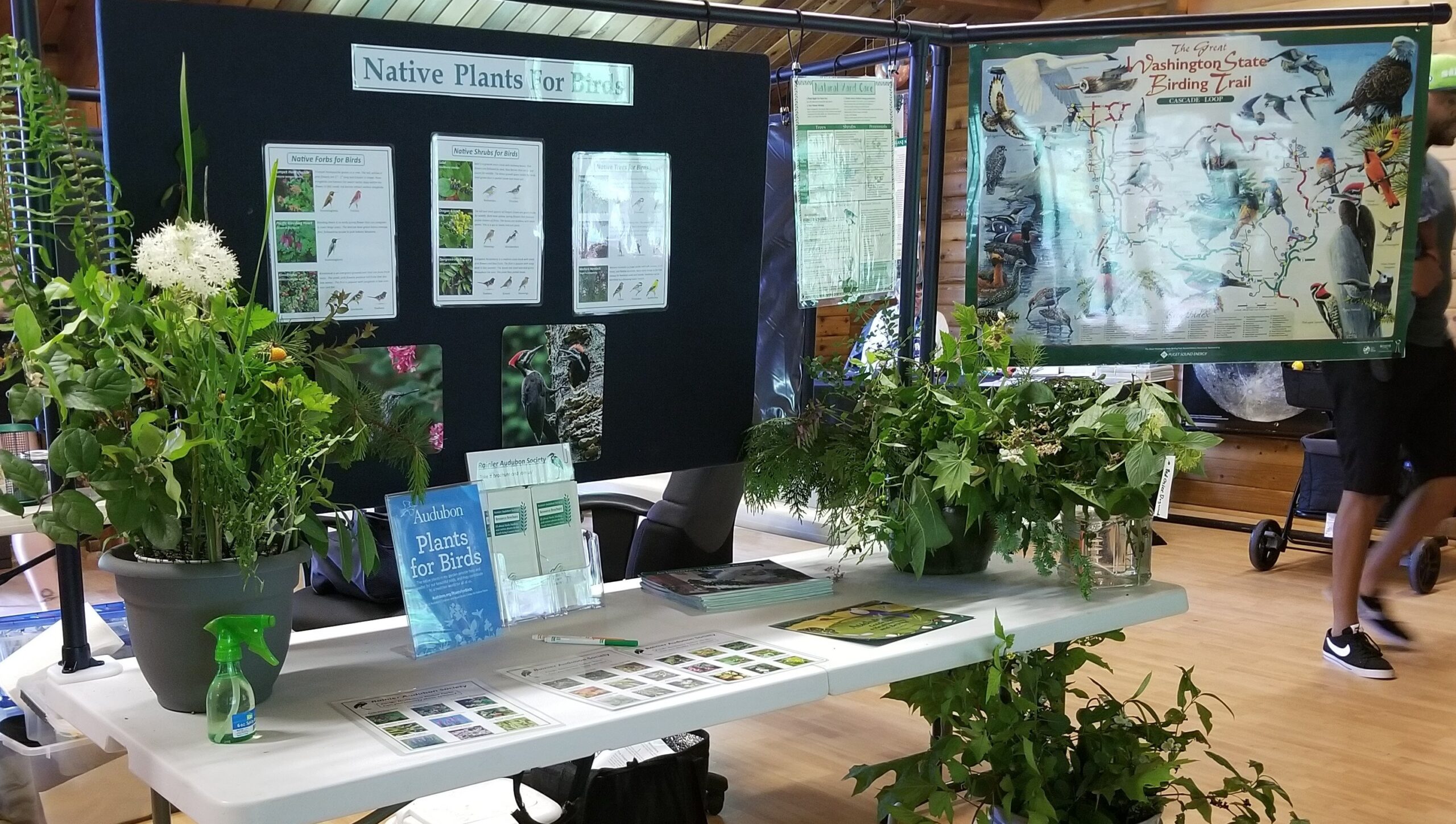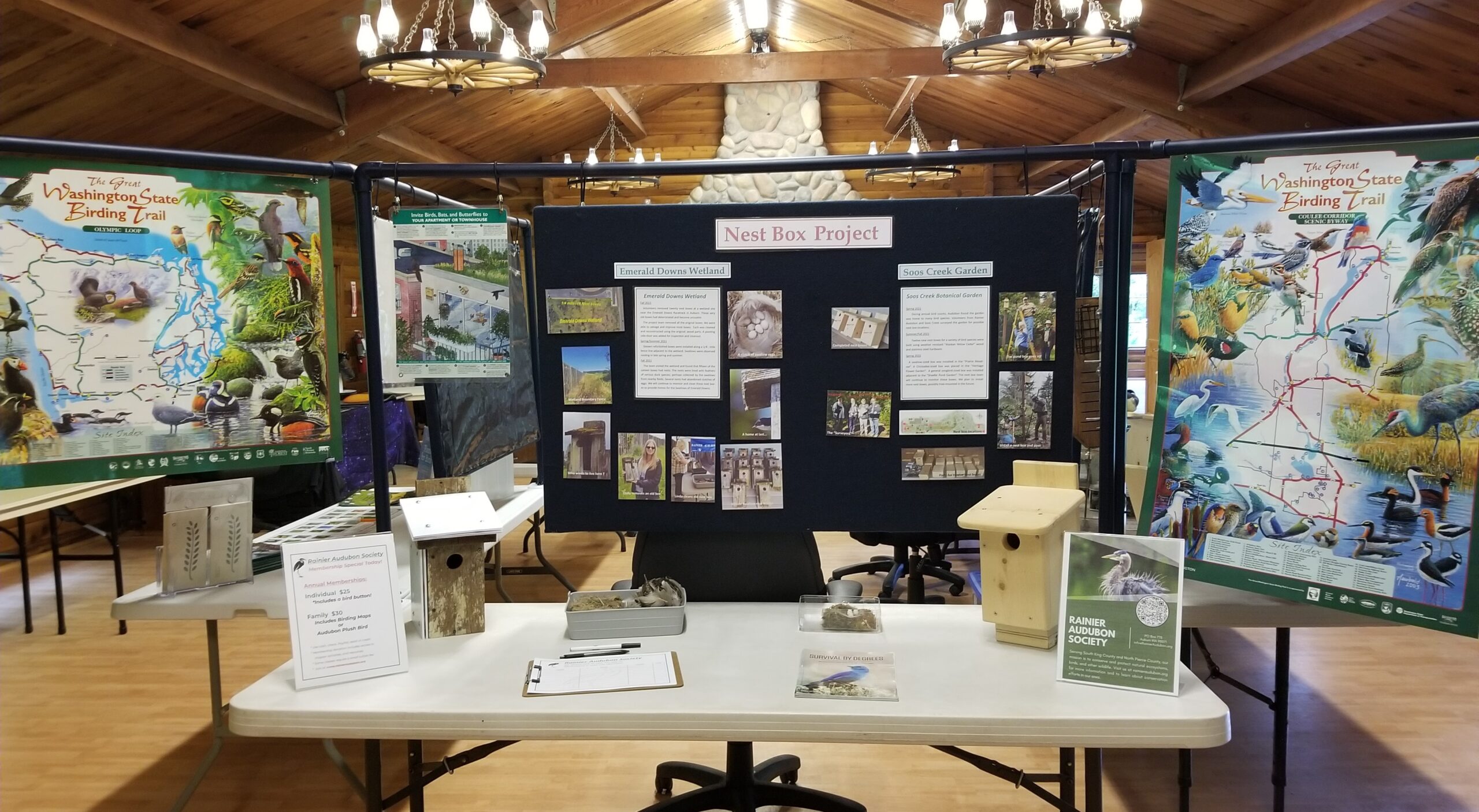
Mewsings From Millie – March 2025
(Reprinted with permission from the Burien Wild Birds Unlimited store.)
Hello, and welcome once again to my musings!

Each day the daylight is lasting a wee bit longer than the day before, and many of the migratory birds are beginning to make an appearance. Soon we will be seeing Violet-Green Swallows, Turkey Vultures, Orange-crowned Warblers, Virginia Rails, Osprey among others and, of course, Rufous Hummingbirds.
The tiny Rufous makes one of the longest migratory journeys of any bird in the world as measured by body size. Just over three inches long, it flies roughly 3900 miles one way from Mexico to Alaska, a distance equivalent to 784,500 body lengths! It makes me tired just thinking about it!
Rufous Hummingbirds are known to have very good memories and will often return a year later to a spot where a nectar feeder was or still is.
The female Rufous is larger then the male and has white tips on its tail feathers.
Rufous Hummingbirds do not have a song but make a sharp chipping noise. In flight, the male Rufous’s wings make a buzzing sound.
Although being the smallest bird in our region, Rufous Hummingbirds are very aggressive and will chase other birds away from feeders.
Rufous Hummingbirds nest further north than any other hummingbird. Because of their high metabolism they must eat constantly, dining on flower nectar, sugar water from feeders, sap from trees, and tiny insects snd spiders.
Another critter that shows up around this time of year is the amazing Orchard Mason Bee, also known as just Mason Bee or the Blue Orchard Bee.
These cute, little bees are gentle, peaceful creatures. They don’t have a queen to defend so they will not attack if disturbed. The males don’t even have a stinger. Mason Bees are smaller and rounder than a honeybee and are a beautiful dark blue-green with a metallic shine.
These bees only live for four to six weeks. They don’t make honey but spend their entire lives collecting nectar and pollen to feed themselves and their young and pollinating plants and trees. Mason Bees and native to our area and well suited to doing this important job.
Though tiny, Mason Bees are very industrious. A female will visit about 1875 blossoms a day!
The name ‘Mason’ comes from the fact that the female builds mud walled compartments for each larva that hatches. Unlike honeybees, Mason Bees do not colonize. They are very independent and known as ‘solitary’ bees.
Most birds that we know are not solitary and that is why there are so many collective nouns for groups of birds. This month’s offerings include: a covey of grouse, a nide of pheasants, and a stand of flamingos.
Until next time,
Millie, the Muse of Mews




